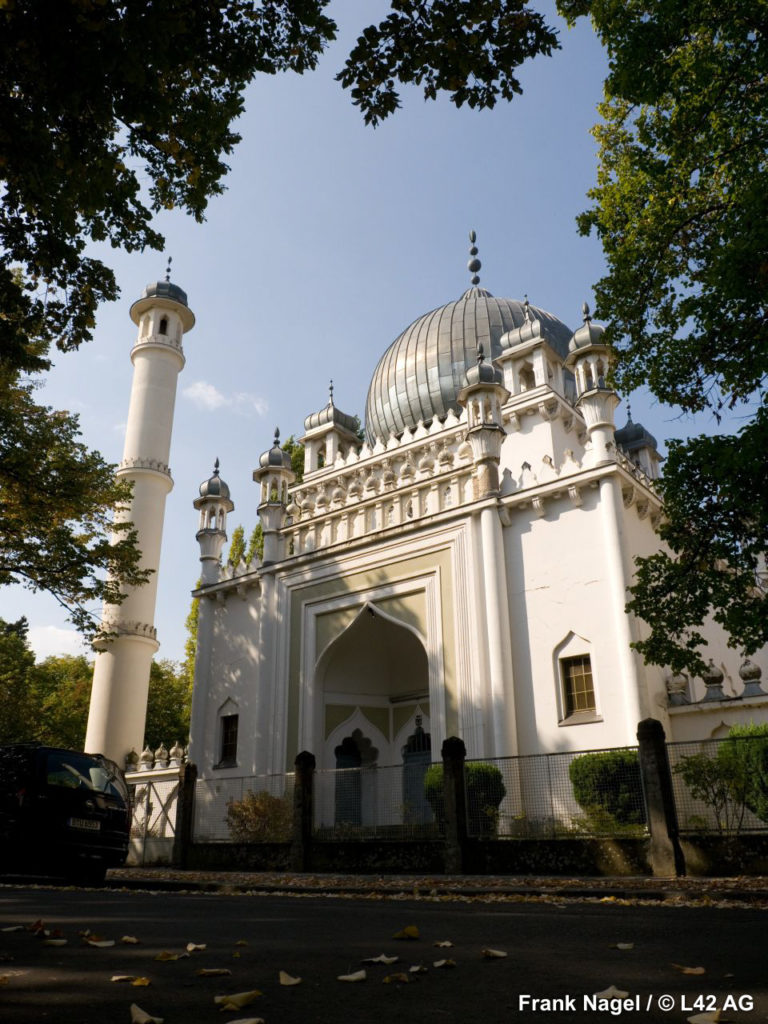
In a little bourgeois street of houses and stillness arises the white mosque of Ahmadiyya, built in 1924 in an Indian style by German architects who had been commissioned by the Pakistan-based religious association Ahmadiyya Anjuman with the missionary intent of expanding Islam. In the roaring ‘20s there were 1,400 Muslims from 40 different countries living in Berlin. This is the oldest mosque in all of Germany. Its shining white walls are covered by a series of subtle towers and by a metallic dome topped by the half-moon of Islam. Even the other little domes and the windowsills are silver-plated. These are unusual colors for Berlin. In the last days of the Second World War, the cool Islamic temple was used as a position to machinegun the Russians and was therefore in large part destroyed. Immediately after the war it was restored by the English and since 1993 has been a national monument.
Today some cracks have unfortunately returned and have revealed the gray walls beneath. The garden is partially taken care of and partially left to its own devices. There are roses of all colors in perfect harmony with the noble and elegant building.
We can enter through a delicate filigreed gold and white wall and discover that the ceiling and the higher part of the walls are ochre, while down below they are painted a brick red, with a mauve green and robin egg blue. Rugs cover the floors and are all the colors of a meadow in bloom: green, brown, rose, red, gray, orange, blue…Four large white-bordered arabesques open across the four sides of this centrally-planned temple in contrast to the intense colors of the walls. The entire hall gives an immense feeling of grace and kindness, which clashes with that strange humid smell of country sacristy. The holy texts with their gilded corners are placed on the various tables. The pulpit naturally is facing Mecca. The mosque is to be open to all and at one o’clock every Friday afternoon it is possible to participate in prayers.
We find the poet outside, talking with the roses.
Translated by Alexander Booth

